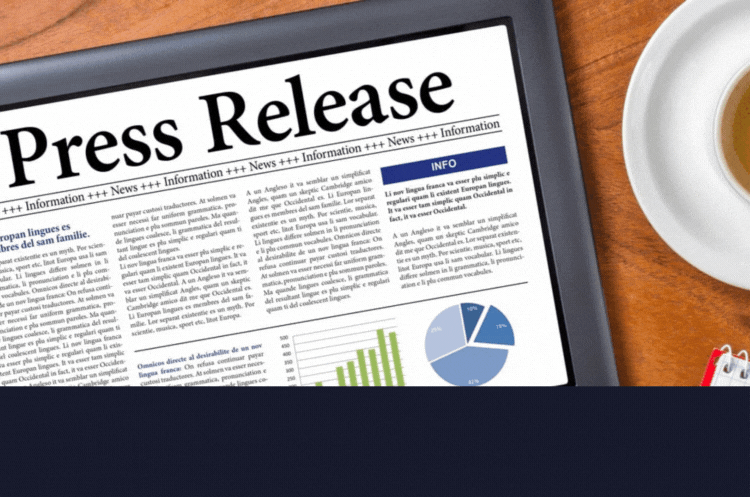
Crafting an Effective Crisis Press Release: A Step-by-Step Guide
In the ever-evolving landscape of the business world, unexpected challenges and crises can strike at any given moment. Being prepared to effectively manage these situations is not just a good idea; it’s a necessity for any organization. Rather than waiting until your company is engulfed in a crisis, it’s far better to be proactive and have a well-thought-out crisis communication plan in place. And a critical component of this plan is the Crisis Press Release.
A crisis press release, also known as a crisis statement, is a powerful tool that allows organizations to communicate with their target audience, stakeholders, and the general public during times of crisis. It serves as a means to address the issue openly and demonstrate the organization’s commitment to resolving it. In this guide, we’ll delve into the essential steps to create an effective crisis press release.
The Purpose of a Crisis Communication Press Release
Before we dive into the specifics of crafting a crisis press release, it’s essential to understand its purpose. A crisis press release serves several crucial functions:
Immediate Response: In times of crisis, speed is of the essence. Crafting a press release swiftly allows you to address the issue as soon as possible. Having pre-prepared templates for different crisis scenarios can save precious time.
Thoughtfulness: While speed is vital, taking the time to craft a thoughtful response is equally important. Your response should show sensitivity to the crisis and express empathy toward those affected.
Content Planning: The content of a press release can be complex, as each crisis is unique and may require a different message. Key questions to consider include:
Is Your Organization at Fault? Take responsibility transparently and without defensiveness if your organization is at fault.
Who Was Impacted? Address those affected and how you plan to prevent similar occurrences for others.
How Is Your Organization Responding? Detail the actions your organization is taking to rectify the situation.
Why Can Your Organization Be Trusted Again? Assure stakeholders that such a crisis won’t happen again and outline clear steps to prevent it.
Creating Your Press Release
Once you’ve grasped the purpose and considerations, it’s time to create your crisis press release. Here’s a basic structure to follow:
- Headline
Provide a concise summary of the press release to inform readers of its content at first glance.
- Overview of The Crisis
In the first paragraph, offer a brief overview of the crisis, including essential details that set the stage for further explanation.
- Crisis Response
Detail your organization’s response to the crisis in the body of the press release. Be factual, transparent, and empathetic in your communication.
- Summary
In the final paragraph, summarize the key points previously stated, and conclude with a call to action. This could involve directing readers to your website for updates or offering a helpline for those affected.
- Contact Info
Include your company’s contact information and that of your PR person, whether in-house or from an agency, such as an email address and phone number. Make it easy for interested parties to reach out with questions or concerns.
Distributing Your Press Release

Crafting a well-thought-out crisis press release is only half the battle. To ensure it reaches your intended audience, you must distribute it effectively. Here are some distribution methods to consider:
Press Release Distribution Services: Utilize platforms to disseminate your press release to a wide range of media outlets.
Media Outreach: Send your press release directly to various media outlets, journalists, and editors from a contact list you have developed over time.
Social Media Sharing: Share your press release on your organization’s social media channels to reach your online audience quickly. Ensure that you use relevant hashtags and keywords to increase visibility.
In conclusion, a well-crafted crisis press release is an indispensable tool for managing and mitigating the impact of a crisis on your organization. By following these steps and best practices, you can communicate effectively, demonstrate responsibility, and work towards rebuilding trust with your stakeholders. Remember, in times of crisis, preparation and proactive communication are key to navigating the storm successfully.
About Build Brand Better
We, at Build Brand Better, understand the critical role reputation plays in the success of any organization. Our dedicated team of experts specializes in helping businesses like yours not only weather the storm during times of crisis but also proactively shape and maintain a positive online presence.
Why Choose Build Brand Better?
Expertise: Our team consists of seasoned professionals who are well-versed in the intricacies of online reputation management. We have a deep understanding of the digital landscape and know how to navigate it strategically to protect and enhance your brand’s image.
Tailored Solutions: We recognize that every crisis and brand is unique. That’s why we offer customized solutions tailored to your specific needs. Whether you’re dealing with a public relations disaster or simply looking to bolster your online reputation, we’ve got you covered.
Proactive Approach: While we excel at crisis management, our approach is inherently proactive. We believe that prevention is the best cure. We work with you to establish a robust online reputation strategy that minimizes the risk of future crises.
Transparency: Trust is at the core of what we do. We are committed to transparency in our actions and communications. When you partner with Build Brand Better, you can expect honest, straightforward advice and results-driven strategies.
In conclusion, effective crisis communication and reputation management are critical components of any successful organization’s strategy. With the right approach and support, you can navigate crises with resilience and come out stronger on the other side. Build Brand Better is here to help you achieve just that.
FAQ
Q1: What is a crisis press release, and why is it important?
A1: A crisis press release, also known as a crisis statement, is a formal communication issued by an organization during a crisis. Its purpose is to provide information, address concerns, and demonstrate the organization’s commitment to resolving the crisis. It’s essential because it allows for transparent and timely communication with stakeholders and the public.
Q2: When should we issue a crisis press release?
A2: A crisis press release should be issued as soon as possible after a crisis is identified. Speed is crucial in crisis communication. In some cases, having pre-prepared templates for various crisis scenarios can help you respond swiftly.
Q3: What should be included in the headline of a crisis press release?
A3: The headline should provide a concise summary of the press release’s content. It should be attention-grabbing and informative, giving readers a clear idea of the crisis you’re addressing.
Q4: How do I determine the content of a crisis press release?
A4: The content of a crisis press release should address key questions:
Is your organization at fault?
Who was impacted?
How is your organization responding?
Why can your organization be trusted again?
These questions should guide the structure and content of your release.
Q5: Can you explain the structure of a crisis press release?
A5: A typical crisis press release structure includes:
Headline
Overview of the Crisis
Crisis Response
Summary
Contact Information
This structure ensures that your message is clear, concise, and easily digestible
FOR MORE BLOGS:- www.buildbrandbetter.io/blog/
